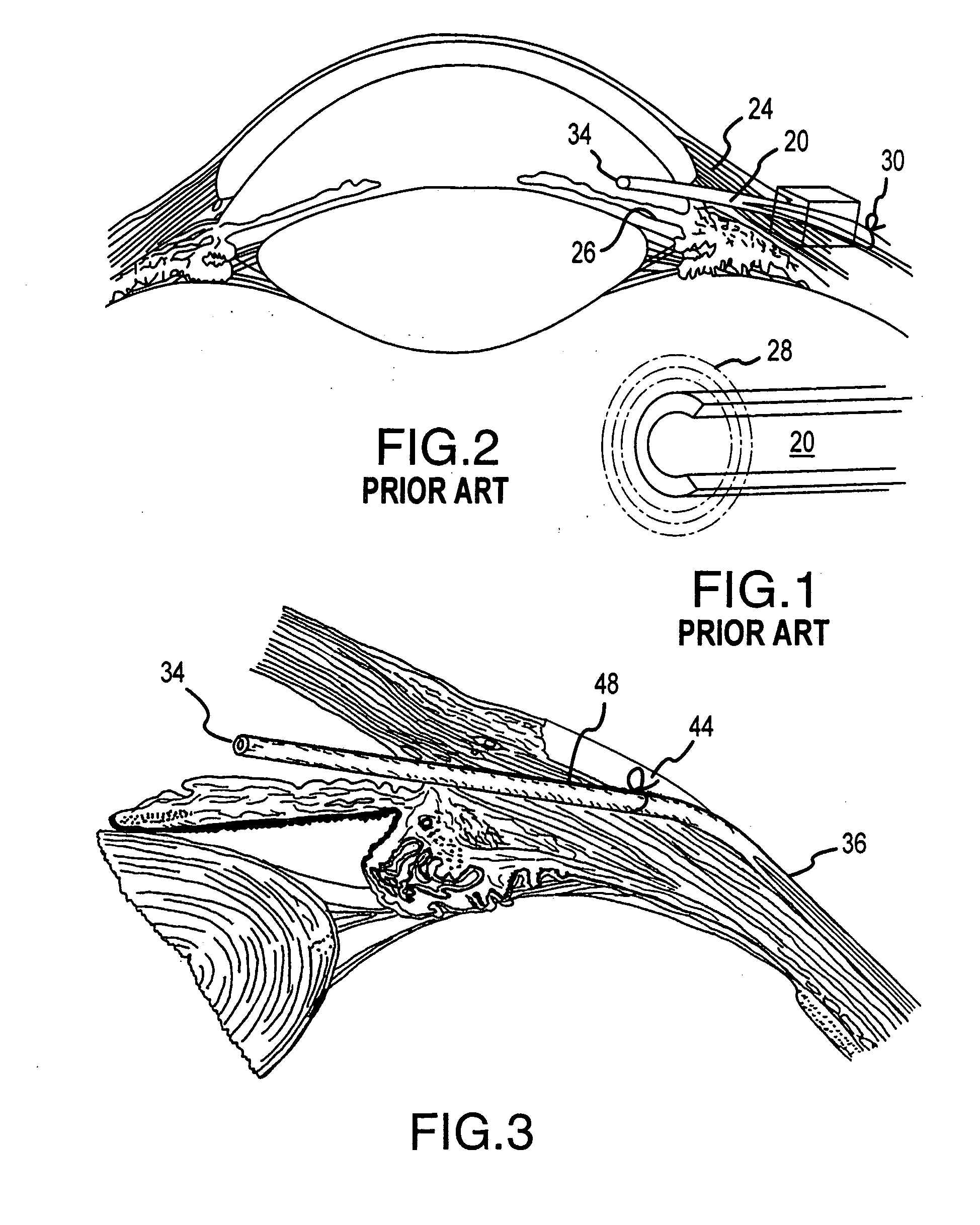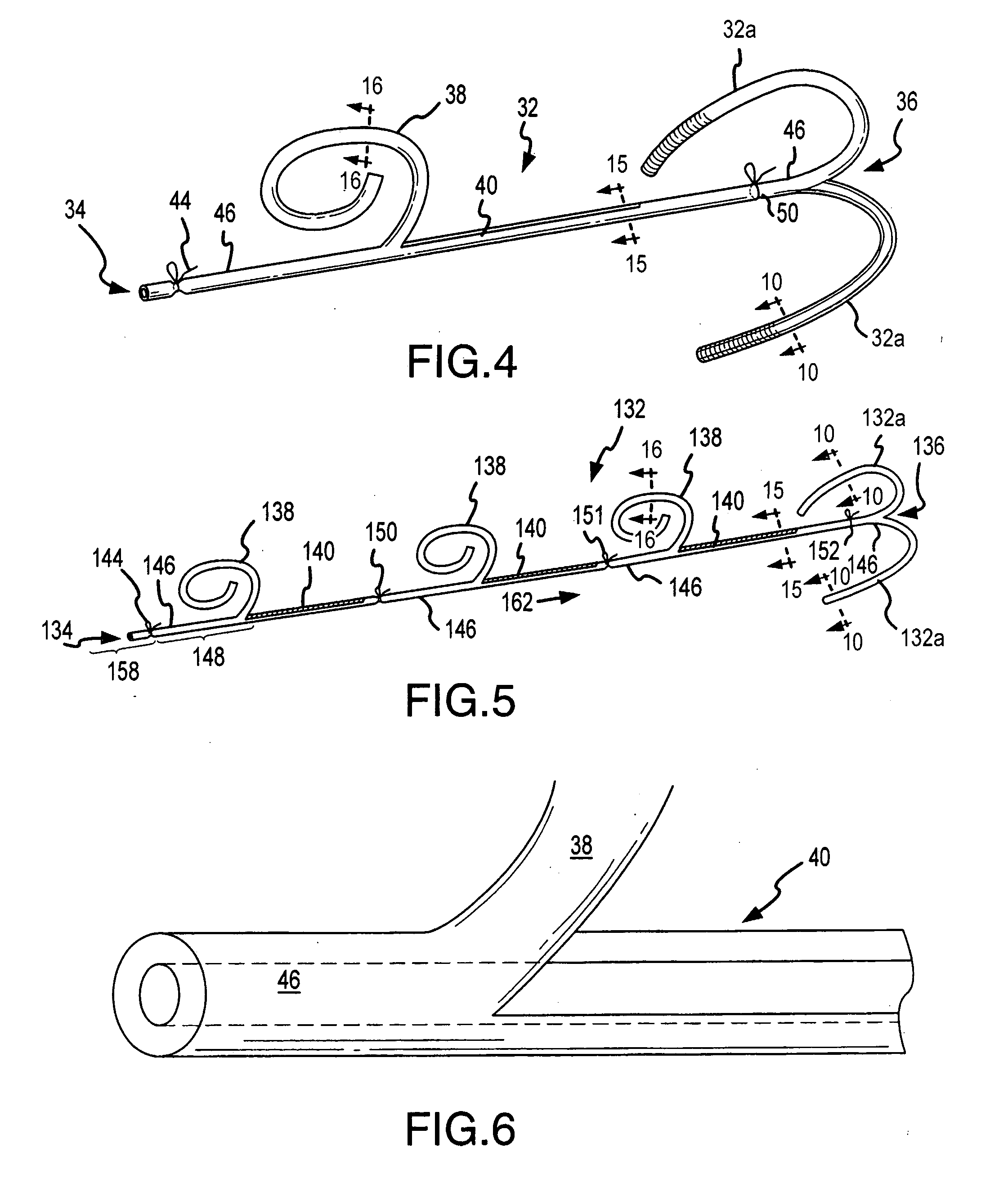C-shaped cross section tubular ophthalmic implant for reduction of intraocular pressure in glaucomatous eyes and method of use
a glaucomatous eye and intraocular pressure technology, which is applied in the field of c-shaped cross-section tubular ophthalmic implants for reducing intraocular pressure in glaucomatous eyes and method of use, can solve the problems that the pressure from the anterior chamber may not always be sufficient to separate the capsule, and achieves the effects of increasing fluid filtration, reducing intraocular pressure, and increasing surface area
- Summary
- Abstract
- Description
- Claims
- Application Information
AI Technical Summary
Benefits of technology
Problems solved by technology
Method used
Image
Examples
Embodiment Construction
[0034] Referring now to FIG. 4 of the drawings, there is shown a schematic representation of the ophthalmic implant, cylindrical tube 32, with the proximal end 34 shown on the left and the distal end 36 shown on the right. It is to be noted that tube 32 may be and includes tubes of a cross-sectional shape other than circular, e.g. triangular, rectangular, pentagonal, L-shaped, etc. This is because the capsule formed around the tube when the capsule is inflated will be essentially a cylindrical shape as it is inflated by fluid. In addition, tube 32 may be of any suitable material. One example of a suitable material is silicone.
[0035] In practice, the conjunctiva is incised about 3 mm from the limbus and the conjunctiva is elevated by blunt dissection 10-12 mm back so that the longer distal end of the implant can be pushed into the pocket so formed. Through this same incision, a needle track is made entering the anterior chamber just in front of the iris. The proximal end 34 is inser...
PUM
 Login to View More
Login to View More Abstract
Description
Claims
Application Information
 Login to View More
Login to View More - R&D
- Intellectual Property
- Life Sciences
- Materials
- Tech Scout
- Unparalleled Data Quality
- Higher Quality Content
- 60% Fewer Hallucinations
Browse by: Latest US Patents, China's latest patents, Technical Efficacy Thesaurus, Application Domain, Technology Topic, Popular Technical Reports.
© 2025 PatSnap. All rights reserved.Legal|Privacy policy|Modern Slavery Act Transparency Statement|Sitemap|About US| Contact US: help@patsnap.com



